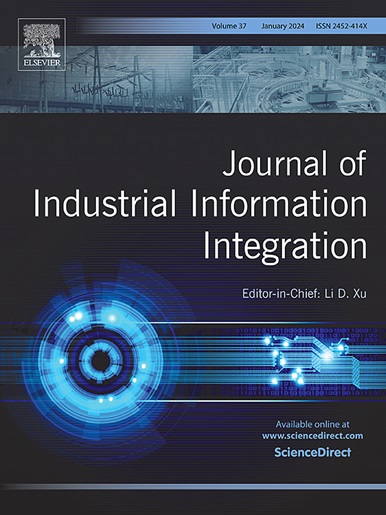增强电子鼻系统对混合气体的辨别能力:利用 SMO 阵列传感器的瞬态电流波动的稀疏递归神经网络
IF 10.4
1区 计算机科学
Q1 COMPUTER SCIENCE, INTERDISCIPLINARY APPLICATIONS
引用次数: 0
摘要
尽管气体传感器阵列技术最近取得了重大进展,但在混合环境中准确识别气体仍然具有挑战性。造成这种困难的主要原因是气体分子吸附(吸附)和脱附(脱附)传感器的快速和竞争过程。在本研究中,我们提出了一种简单的方法来制造基于 SMO 的 2 × 4 气体传感器阵列,并将其与采用权重正则化的稀疏递归神经网络 (SRNN) 相结合。SRNN 的递归层处理非线性信息并捕捉传感器数据中的时间依赖性,而正则化技术简化了模型,使其既高效又易于解释。此外,我们还引入了一个新特征:电流动态,标记为 ΔI。这一特征使 SRNN 模型能够有效地检测气体分子的吸附和解吸。我们证明,我们的模型可以区分三个直观上无法区分的气体物种数据集(NO2、HCHO 和一种混合物),准确率高达 92%。通过利用气体分子快速、竞争性的吸附/解吸信息,我们的模型可以应用于各种气体组合环境,而不像传统的气体传感数据需要长时间测量。通过将传感器阵列与先进的 SRNN 模型相结合,我们为复杂的电子鼻系统铺平了道路,该系统有望应用于先进的气体传感技术,例如通过呼出气体分析进行疾病诊断,以及检测混合气体环境中的有毒物质。本文章由计算机程序翻译,如有差异,请以英文原文为准。
Enhancing mixed gas discrimination in e-nose system: Sparse recurrent neural networks using transient current fluctuation of SMO array sensor
Despite recent significant advancements in gas sensor array technology, accurately identifying gases in mixed environments remains challenging. This difficulty is primarily due to the rapid and competing processes of gas molecules attaching to (adsorption) and detaching from (desorption) the sensor. In this study, we present a simple method to fabricate a 2 × 4 SMO-based gas sensor array, coupled with a sparse recurrent neural network (SRNN) that employs weight regularization. The recurrent layers of the SRNN process nonlinear information and capture temporal dependencies in the sensor data, while the regularization technique simplifies the model, making it both efficient and easier to interpret. Additionally, we introduce a novel feature: the dynamics of current, labeled as ΔI. This feature enables the SRNN model to efficiently detect the adsorption and desorption of gas molecules. We demonstrate that our model can distinguish between three intuitively indistinguishable datasets of gas species (NO2, HCHO, and a mixture) with up to 92 % accuracy. By utilizing the fast and competitive adsorption/desorption information of gas molecules, our model can be applied to various gas combination environments, unlike conventional gas sensing data measured over longer periods. By integrating the sensor array with the advanced SRNN model, we pave the way for sophisticated e-nose systems, with potential applications in advanced gas sensing technologies, such as disease diagnosis through exhaled breath analysis and the detection of toxic species in mixed gas environments.
求助全文
通过发布文献求助,成功后即可免费获取论文全文。
去求助
来源期刊

Journal of Industrial Information Integration
Decision Sciences-Information Systems and Management
CiteScore
22.30
自引率
13.40%
发文量
100
期刊介绍:
The Journal of Industrial Information Integration focuses on the industry's transition towards industrial integration and informatization, covering not only hardware and software but also information integration. It serves as a platform for promoting advances in industrial information integration, addressing challenges, issues, and solutions in an interdisciplinary forum for researchers, practitioners, and policy makers.
The Journal of Industrial Information Integration welcomes papers on foundational, technical, and practical aspects of industrial information integration, emphasizing the complex and cross-disciplinary topics that arise in industrial integration. Techniques from mathematical science, computer science, computer engineering, electrical and electronic engineering, manufacturing engineering, and engineering management are crucial in this context.
 求助内容:
求助内容: 应助结果提醒方式:
应助结果提醒方式:


